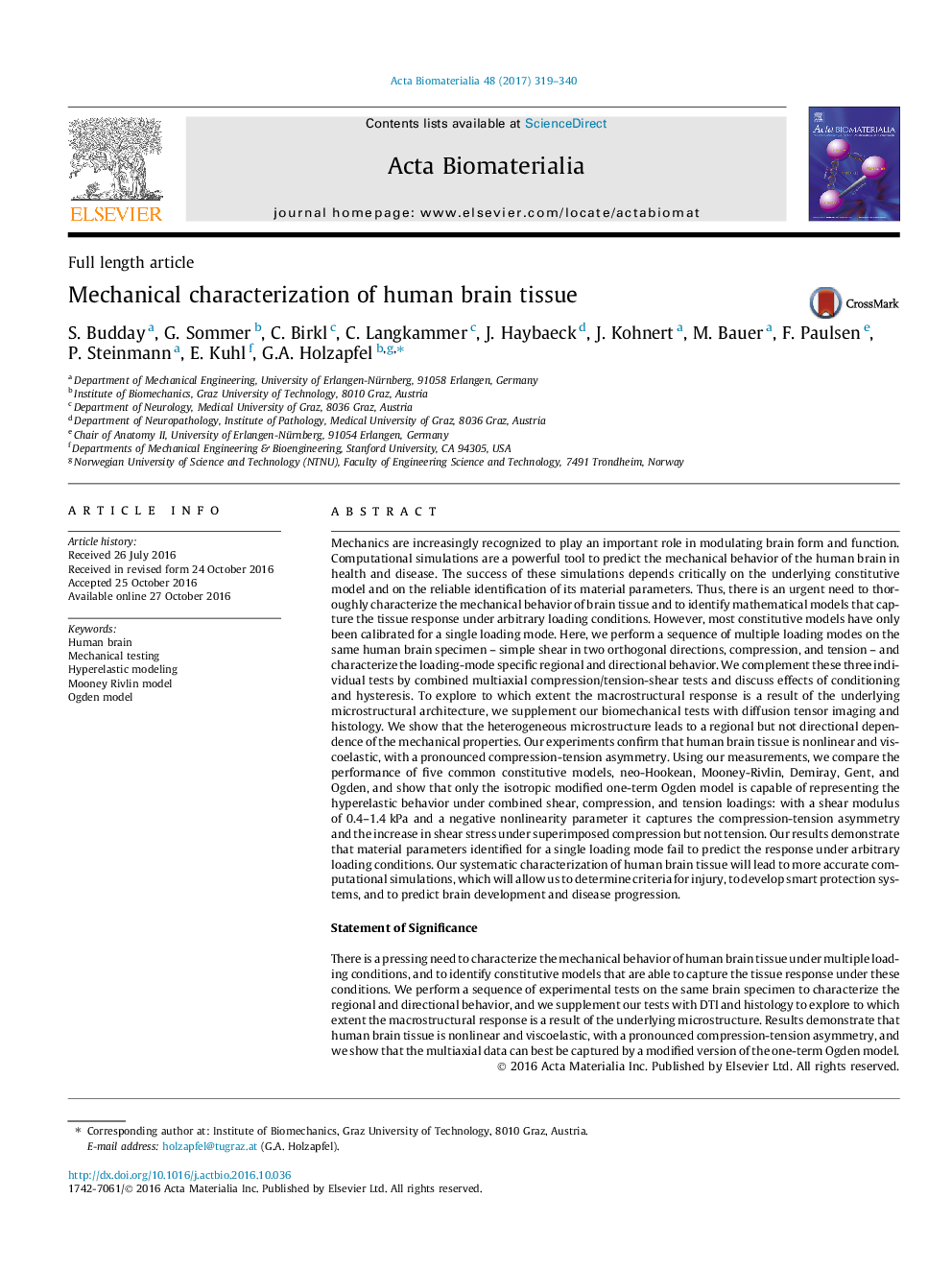| کد مقاله | کد نشریه | سال انتشار | مقاله انگلیسی | نسخه تمام متن |
|---|---|---|---|---|
| 6449920 | 1415938 | 2017 | 22 صفحه PDF | دانلود رایگان |
Mechanics are increasingly recognized to play an important role in modulating brain form and function. Computational simulations are a powerful tool to predict the mechanical behavior of the human brain in health and disease. The success of these simulations depends critically on the underlying constitutive model and on the reliable identification of its material parameters. Thus, there is an urgent need to thoroughly characterize the mechanical behavior of brain tissue and to identify mathematical models that capture the tissue response under arbitrary loading conditions. However, most constitutive models have only been calibrated for a single loading mode. Here, we perform a sequence of multiple loading modes on the same human brain specimen - simple shear in two orthogonal directions, compression, and tension - and characterize the loading-mode specific regional and directional behavior. We complement these three individual tests by combined multiaxial compression/tension-shear tests and discuss effects of conditioning and hysteresis. To explore to which extent the macrostructural response is a result of the underlying microstructural architecture, we supplement our biomechanical tests with diffusion tensor imaging and histology. We show that the heterogeneous microstructure leads to a regional but not directional dependence of the mechanical properties. Our experiments confirm that human brain tissue is nonlinear and viscoelastic, with a pronounced compression-tension asymmetry. Using our measurements, we compare the performance of five common constitutive models, neo-Hookean, Mooney-Rivlin, Demiray, Gent, and Ogden, and show that only the isotropic modified one-term Ogden model is capable of representing the hyperelastic behavior under combined shear, compression, and tension loadings: with a shear modulus of 0.4-1.4Â kPa and a negative nonlinearity parameter it captures the compression-tension asymmetry and the increase in shear stress under superimposed compression but not tension. Our results demonstrate that material parameters identified for a single loading mode fail to predict the response under arbitrary loading conditions. Our systematic characterization of human brain tissue will lead to more accurate computational simulations, which will allow us to determine criteria for injury, to develop smart protection systems, and to predict brain development and disease progression.Statement of SignificanceThere is a pressing need to characterize the mechanical behavior of human brain tissue under multiple loading conditions, and to identify constitutive models that are able to capture the tissue response under these conditions. We perform a sequence of experimental tests on the same brain specimen to characterize the regional and directional behavior, and we supplement our tests with DTI and histology to explore to which extent the macrostructural response is a result of the underlying microstructure. Results demonstrate that human brain tissue is nonlinear and viscoelastic, with a pronounced compression-tension asymmetry, and we show that the multiaxial data can best be captured by a modified version of the one-term Ogden model.
242
Journal: Acta Biomaterialia - Volume 48, 15 January 2017, Pages 319-340
